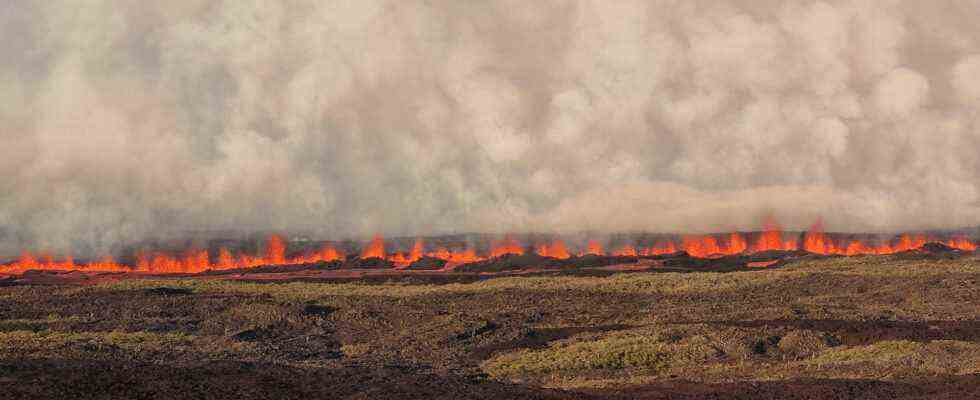Status: 07.01.2022 7:19 p.m.
The highest volcano on the Galápagos Islands erupted for the first time in six years. There are no inhabited areas nearby. However, it is unclear whether there is any danger to the animal world.
The highest volcano in the Galápagos Islands has erupted. “Satellite images show clear thermal anomalies and gas and ash clouds at different heights between 1900 and 3800 meters above sea level,” said a message from the Geophysical Institute of Ecuador. Accordingly, lava flows also flowed down the south and south-east flanks of the 1700-meter-high Wolf volcano on the island of Isabela. The volcano last erupted in 2015.
The volcano is one of numerous active volcanoes on the islands, which are almost 1,000 kilometers from mainland South America in the Pacific. Pictures taken from a distance and shared by the government showed lava glowing through the pre-dawn darkness.
According to the Geophysical Institute in the Ecuadorian capital Quito, the volcano ejected a cloud of gas and ash up to 3.8 kilometers high.
Image: AFP
No danger to humans, but to animals?
There was no imminent threat to inhabited areas on Isabela Island, the largest in the Galápagos chain. However, the Environment Ministry said eight people, including national park rangers and scientists, had been evacuated.
It is unclear whether animals are endangered. The pink iguanas live on the slopes of the volcano, of which there are only 211 specimens left according to a count from last August.
On the Galápagos Islands there are many animal and plant species, including endangered ones, that can only be found there. Because of their special flora and fauna, the archipelago is a UNESCO World Heritage Site. The British naturalist Charles Darwin visited the Galápagos Islands in 1835 and later developed the theory of evolution based on the observations made there.

